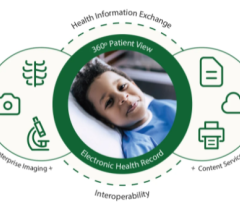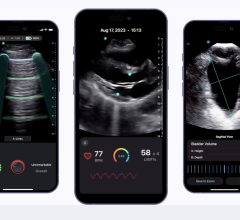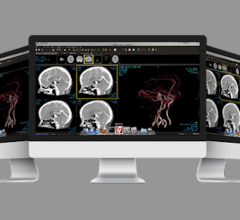
Cristen C. Bolan, Editor
In President Bush’s last State of the Union address, he called for “most Americans to have an electronic health record (EHR) within the next 10 years.” Over the past year, the healthcare industry has been encouraged by an outpouring of congressional support for the computerization of health information. However, a bipartisan legislation to fulfill this promise has yet to be passed.
In the 2006 address, Bush once again underscored the need for EHR as a means for cutting healthcare costs. In the same speech, he hinted at a few more cuts of his own, including a cap on funding to the National Institutes of Health (NIH) and a significant reduction in Medicare.
Some may consider the NIH the lifeblood of medical research in the U.S., funding over 212,000 researchers at more than 2,800 universities, medical schools and other research institutions. Even so, the NIH will feel a tight squeeze on its lifeline with funding frozen at $28.6 billion. This figure does not take into account inflation, which results in a net budget decrease, the first cut in 36 years. One-hundred-sixty-million dollars in spending at the Centers for Disease Control and Prevention (CDC) will evaporate, and overall spending on medical research will drop by nearly 10 percent, according to Dr. Robert Eckel, president of the American Heart Association (AHA).
Another priority for the budget is to shrink Medicare. The plan to slash $36 billion over five years and $105 billion over a decade is designed to curb the 8.1 percent annual growth rate of the federal health insurance program for the elderly and disabled. This adds up to an $8 billion decrease in payment to hospitals, $5.1 billion to nursing homes and $3.5 billion to home healthcare providers. As an alternative to Medicare, the administration hopes that expanded tax-free health savings accounts will replenish dried-up federal healthcare funds for individuals.
So how is the industry reacting?
Secretary of Health and Human Services (HHS), Mike Leavitt, chalked it up to “[h]ard choices had to be made,” adding that, “this budget reflects our effort to make those in the wisest way.”
NIH Director Elias A. Zerhouni, M.D. put a positive spin on the situation, saying that “the agency has retained enough flexibility to direct money to the most promising research avenues,” reported the Washington Post. “What we have to recognize is that you have to do prioritization.”
The new budget has certainly set the priorities straight for the healthcare industry – implement EHR today. Several studies have already identified the potential savings to integrating a nationwide EHR. A 2004 study by UMASS Center for Health Policy and Research (CHPR) on improving Medicaid strongly recommended the “the adoption of health care information technology, namely electronic health records.”
But true cost savings vary widely. HHS published two estimates on savings from the adoption of health IT – one as high as $78 billion annually and another for $44 billion based on the widespread implementation of IT used in ambulatory care settings (both reports were conducted by the Center for Information Technology [CIT] leadership study). Meanwhile, the study by the CHPR projected that a net benefit from EHR and interoperability would factor only around $1 billion over a five-year period in Massachusetts alone, which spread across the nation is a far cry from $78 billion annually.
Still, most experts agree that EHRs will improve efficiencies to significantly cut costs. But with all of these federal budget cuts, who is going to belly up and put down the initial investment?


 June 28, 2024
June 28, 2024 








